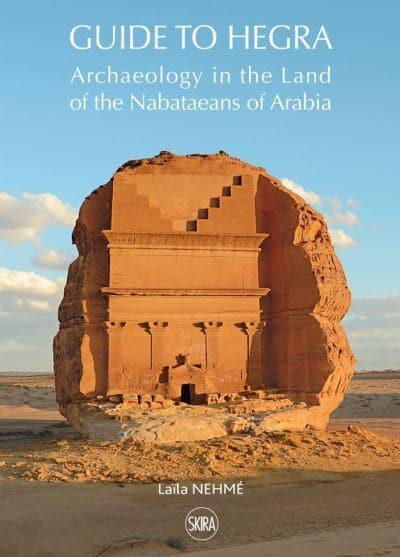 Guide to Hegra
Guide to Hegra

An archaeological guidebook to the awe-inspiring site of an ancient Bedouin city In the vast alluvial plains of the Saudi desert lie the ruins of a once-thriving ancient city, remarkably well preserved with more than 100 monuments and tombs along the sandstone massifs. Though they existed for many years as a number of nomadic Bedouin tribes, the ancient Nabataean people eventually established their kingdom in the Hejaz region of western Saudi Arabia in the 1st century. They built a vast city surrounded by a rampart beyond which lay the necropolis where they buried their dead and the area reserved for their religious brotherhoods.
This guide to the ruins of Hegra is the first of its kind and offers readers a detailed photographic tour of the site and its superb monuments as well as chapters on the history of the Nabataeans accompanied by maps, a glossary and a bibliography for further study.
|
|

Laïla Nehmé (nata nel 1966) è un'archeologa libanese-francese. Specialista in archeologia ed epigrafia del Vicino Oriente antico, è nota per le sue ricerche sugli scritti nabatei, l'evoluzione della scrittura nabatea nell'arabo e gli scavi archeologici a Petra e Madâ'in Sâlih. Laïla Nehmé è nata a Beirut , Libano , dove ha frequentato il liceo. Un incontro con una restauratrice di ceramiche proveniente da uno scavo nel nord del Libano l'ha spinta a cercare studi superiori in archeologia.
Nehmé ha frequentato l' Università Pantheon-Sorbonne , dove Jean-Marie Dentzer ha guidato la sua ricerca tra il 1991 e il 1994. Ha scritto la sua tesi di dottorato su Petra nel 1994. Ha iniziato a condurre scavi in Siria e Giordania ea specializzarsi nell'epigrafia dell'arabo settentrionale.
Nehmé ha diretto gli scavi a Madâ'in Sâlih, antico centro nabateo. Il suo team ha scoperto diversi siti tombali, una città murata, comprendente strutture in mattoni di fango, nonché oasi in cui i granai e i pozzi sostenevano testimonianze della agricoltura locale. Ha studiato la transizione delle scritture dall'aramaico nabateo alla forma riconoscibile araba tra il III e il V secolo d.C., in sostituzione dell'alfabeto arabo indigeno. |